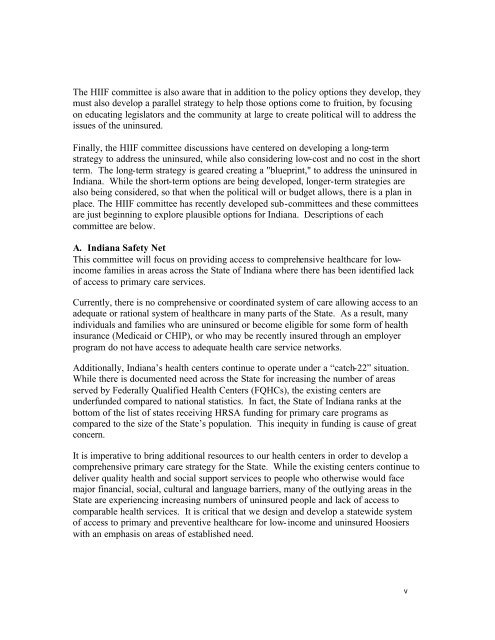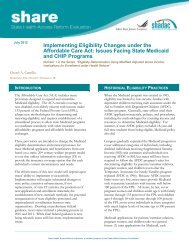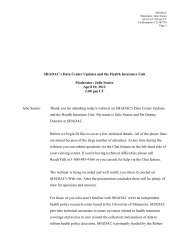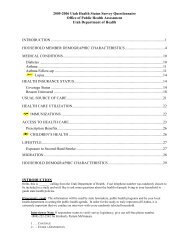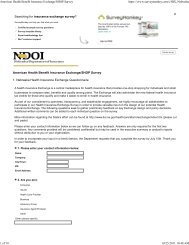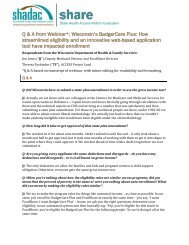2003 findings with survey instrument - Shadac
2003 findings with survey instrument - Shadac
2003 findings with survey instrument - Shadac
- No tags were found...
Create successful ePaper yourself
Turn your PDF publications into a flip-book with our unique Google optimized e-Paper software.
The HIIF committee is also aware that in addition to the policy options they develop, theymust also develop a parallel strategy to help those options come to fruition, by focusingon educating legislators and the community at large to create political will to address theissues of the uninsured.Finally, the HIIF committee discussions have centered on developing a long-termstrategy to address the uninsured, while also considering low-cost and no cost in the shortterm. The long-term strategy is geared creating a "blueprint," to address the uninsured inIndiana. While the short-term options are being developed, longer-term strategies arealso being considered, so that when the political will or budget allows, there is a plan inplace. The HIIF committee has recently developed sub-committees and these committeesare just beginning to explore plausible options for Indiana. Descriptions of eachcommittee are below.A. Indiana Safety NetThis committee will focus on providing access to comprehensive healthcare for lowincomefamilies in areas across the State of Indiana where there has been identified lackof access to primary care services.Currently, there is no comprehensive or coordinated system of care allowing access to anadequate or rational system of healthcare in many parts of the State. As a result, manyindividuals and families who are uninsured or become eligible for some form of healthinsurance (Medicaid or CHIP), or who may be recently insured through an employerprogram do not have access to adequate health care service networks.Additionally, Indiana’s health centers continue to operate under a “catch-22” situation.While there is documented need across the State for increasing the number of areasserved by Federally Qualified Health Centers (FQHCs), the existing centers areunderfunded compared to national statistics. In fact, the State of Indiana ranks at thebottom of the list of states receiving HRSA funding for primary care programs ascompared to the size of the State’s population. This inequity in funding is cause of greatconcern.It is imperative to bring additional resources to our health centers in order to develop acomprehensive primary care strategy for the State. While the existing centers continue todeliver quality health and social support services to people who otherwise would facemajor financial, social, cultural and language barriers, many of the outlying areas in theState are experiencing increasing numbers of uninsured people and lack of access tocomparable health services. It is critical that we design and develop a statewide systemof access to primary and preventive healthcare for low-income and uninsured Hoosiers<strong>with</strong> an emphasis on areas of established need.v


